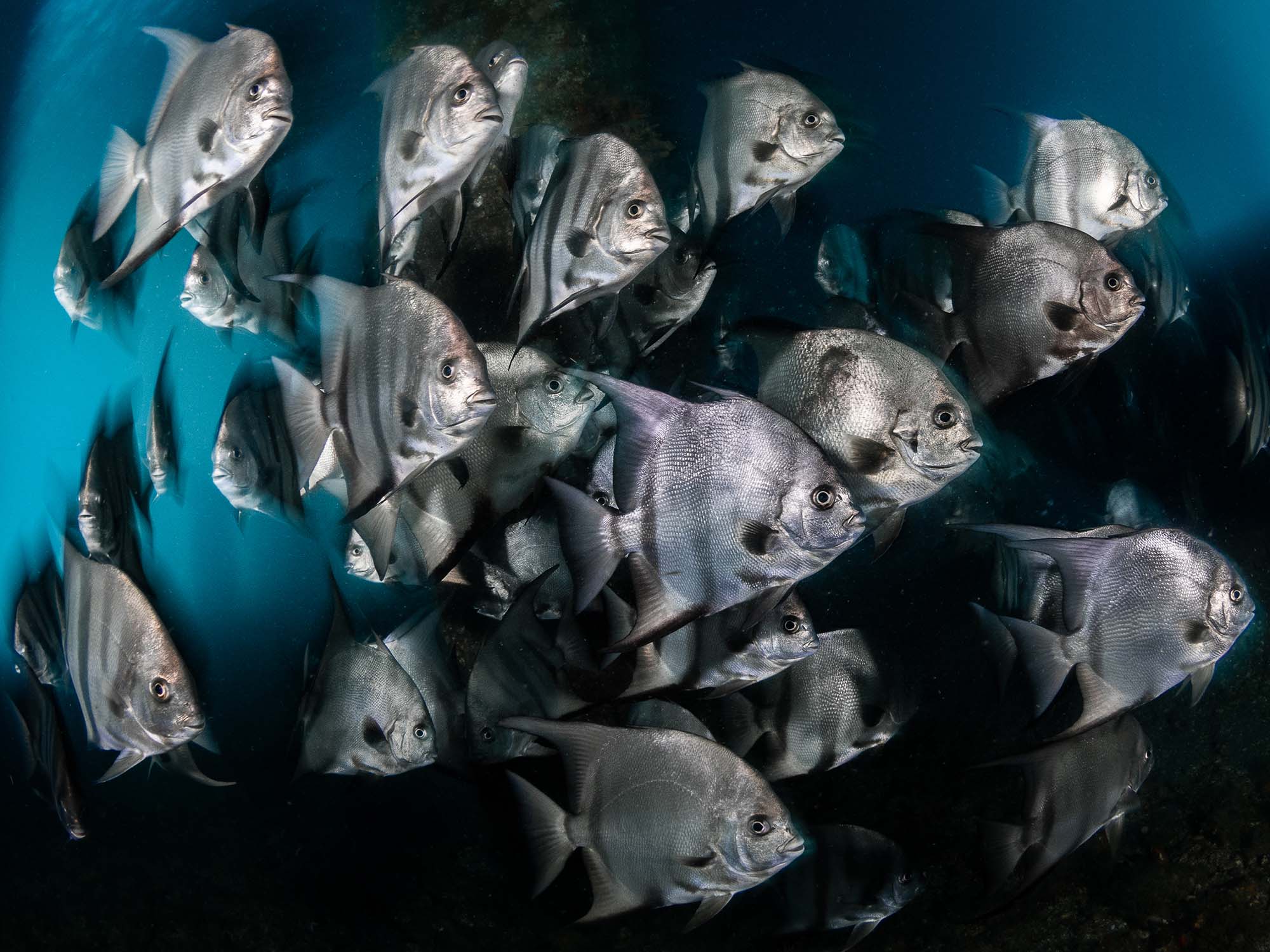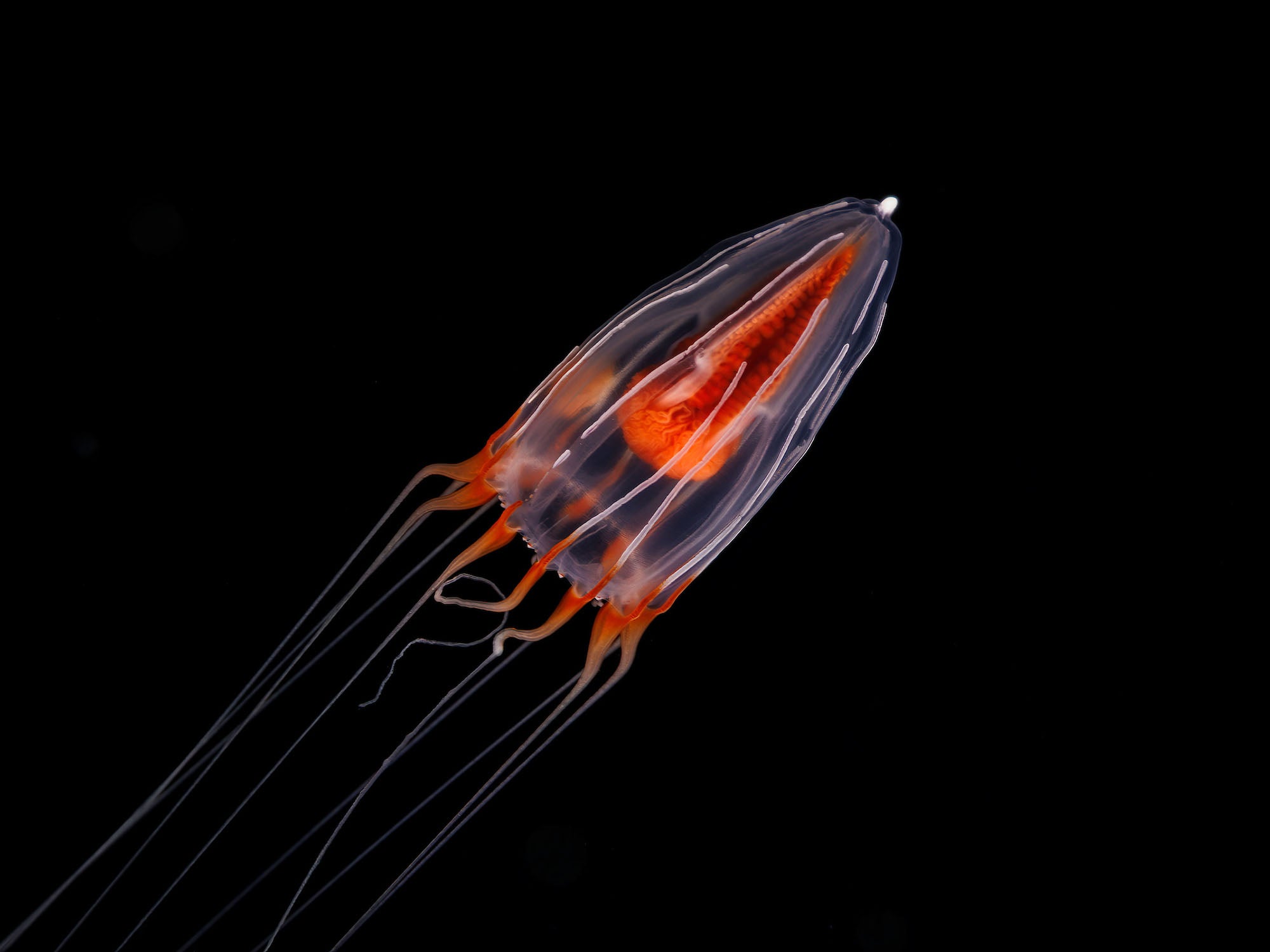Steve Miller wraps up our series on the three primary exposure settings with ISO and how it affects your underwater images.
Watch the video or scroll down for the article version.
What is ISO?
ISO is one of the three primary settings to dial in for a properly exposed photo. We’ll talk about how ISO affects your photos and what ISO values I’m usually shooting underwater.
Make sure you also check out our videos on Aperture and Shutter Speed so you’re in full creative control over your camera.
Your choice of aperture and shutter speed are very subject dependent. These settings affect how much of your subject is in focus and whether there’s motion blur.
Your choice of ISO is environment dependent. It will make a global change to your image’s brightness.
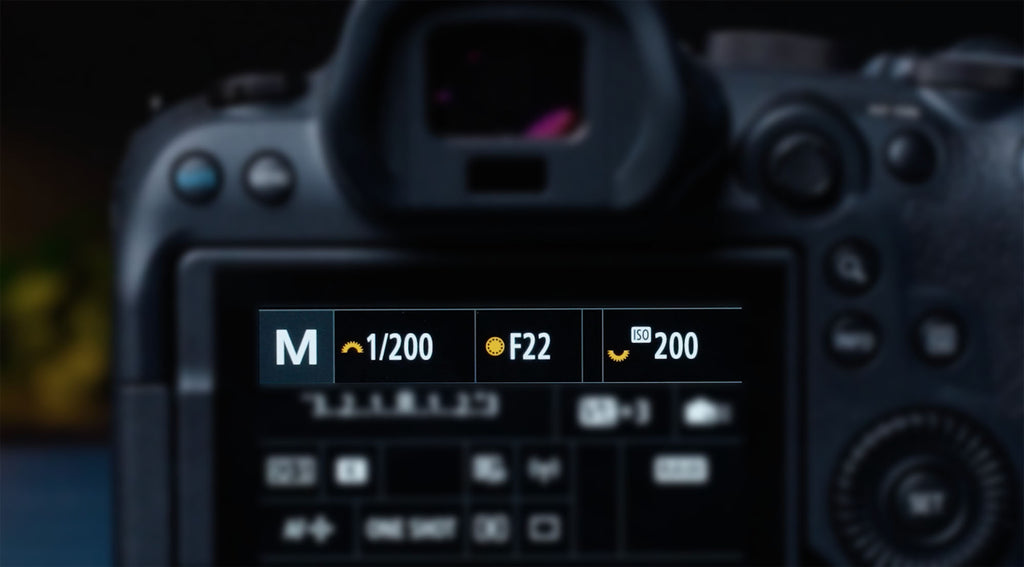
Aperture, Shutter Speed, and ISO are the three most important exposure settings to understand on your camera. Knowing how each affects the photo helps you make the most of any shooting scenario.
Why is ISO Important?
Your ISO setting will affect the range of shutter speeds and apertures that will produce a properly lit photo. You want to make sure these three variables are balanced so that your photo is properly exposed when you pull the trigger. A photo that’s much too dark or too light will lack color and detail in the final result.
Your ISO settings on the camera typically range from 100 up to 128,000 or higher. Digital cameras produced in the last few years are capable of capturing clean images throughout their ISO range.
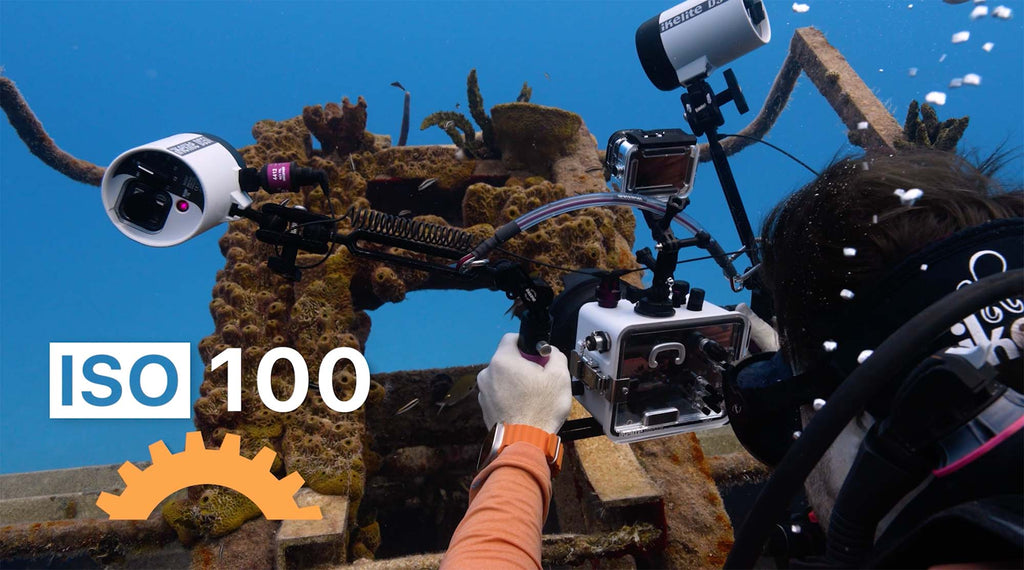
ISO settings between 100-400 are most common for flash photography underwater. Too high of an ISO will require less strobe light, giving you a washed out look that lacks color and detail.
ISO Settings for Flash Photography
When I’m shooting flash photography underwater I’m most commonly shooting in the ISO 100-200 range. I choose low ISOs because in flash photography I’m providing the light artificially.
When shooting natural light photography without strobes, I don’t control the light. So I have to base my ISO on the overall light in the surrounding environment. In low visibility conditions, in swim-throughs, and caverns, I’m going to be shooting higher ISO values like 640, 800, or even 1000 plus.

Shooting in caves and caverns leaves your camera starved for light, often requiring higher ISO values well over 1000 so that you don't have to shoot at super slow shutter speeds.
When to Change ISO
Whether I’m shooting strobes or natural light, I’m rarely changing ISO in between shots on any particular dive. I focus on changing my aperture or shutter speed. If I can’t get a good exposure with these variables, I increase or decrease the ISO accordingly.
So for example if I’m going to shoot dolphins I know I need a shutter speed of at least 1/600 to 1/800th of a second. I set my aperture around f/8. Then I increase my ISO until these settings provide a properly exposed image.
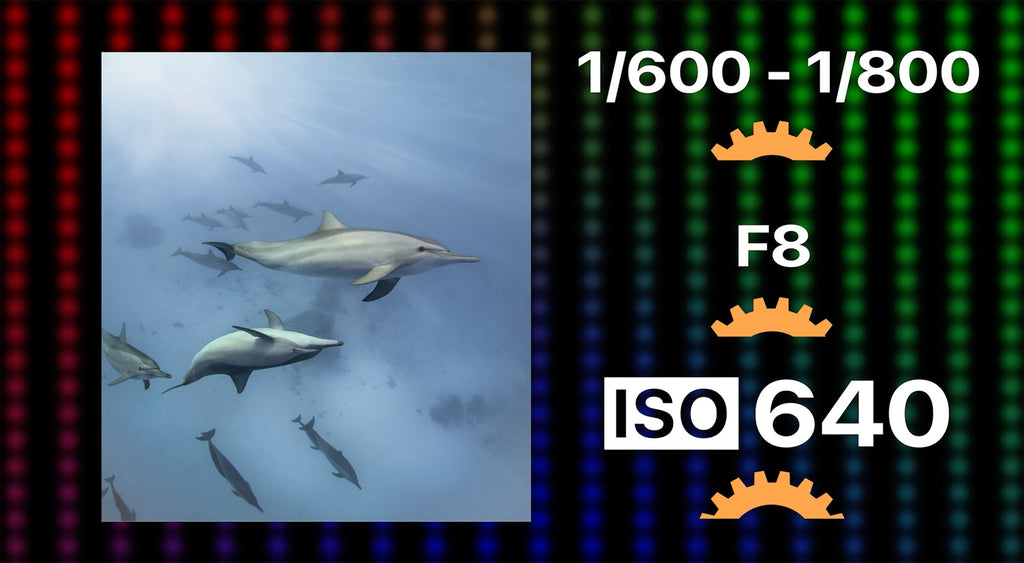
When shooting dolphins underwater you need a shutter speed around 1/640 to stop motion, and an aperture of F5.6-F8 for sharp detail. The correct ISO is the value that gives you enough light with these settings.
That’s all there is to it. If you have any questions about ISO or underwater photography leave us a comment below or reach out to us via ikelite@ikelite.com.
Additional Viewing
Underwater Exposure Explained | Aperture Settings [VIDEO]
Underwater Exposure Explained | Shutter Speed Settings [VIDEO]
Manual Camera Exposure VS Manual Strobe Exposure for Underwater Photography [VIDEO]
5 Situations Where You Need a Strobe Underwater [VIDEO]
Custom White Balance for Underwater with Canon Mirrorless Cameras [VIDEO]
Manual White Balance for Underwater Still Photography
 Ambassador Steve Miller has been a passionate teacher of underwater photography since 1980. In addition to creating aspirational photos as an ambassador, he leads the Ikelite Photo School, conducts equipment testing, contributes content and photography, represents us at dive shows and events, provides one-on-one photo advice to customers, and participates in product research and development. Steve also works as a Guest Experience Manager for the Wakatobi Dive Resort in Indonesia. In his "free" time he busies himself tweaking his very own Backyard Underwater Photo Studio which he's built for testing equipment and techniques. Read more...
Ambassador Steve Miller has been a passionate teacher of underwater photography since 1980. In addition to creating aspirational photos as an ambassador, he leads the Ikelite Photo School, conducts equipment testing, contributes content and photography, represents us at dive shows and events, provides one-on-one photo advice to customers, and participates in product research and development. Steve also works as a Guest Experience Manager for the Wakatobi Dive Resort in Indonesia. In his "free" time he busies himself tweaking his very own Backyard Underwater Photo Studio which he's built for testing equipment and techniques. Read more...











![Underwater Exposure Explained | ISO Settings [VIDEO]](http://www.ikelite.com/cdn/shop/articles/ISO_Settings_Underwater_Exposure_copy.jpg?v=1709251822&width=1500)
